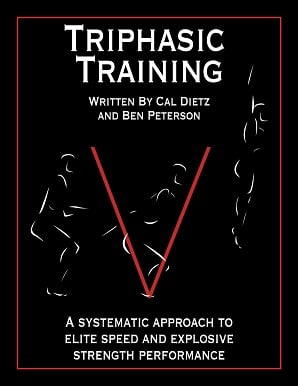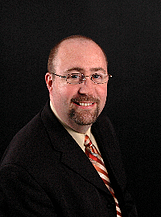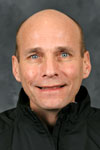The wait is finally over - Triphasic Training by Cal Dietz and Ben Peterson is finally here.
Click HERE to order Cal's Book.
Read a portion of Cal's Book by viewing a previous post HERE.

What the book is about:
The eBook contains over 350 pages, divided clearly into 2 parts: the why and the what. The first section goes through the physiological basis for the Triphasic method, undulated block periodization, and general biological applications of stress. The authors will explain how to incorporate the Triphasic methods into existing programs, with complete descriptions on adapting it to virtually any scenario. Section 2 is devoted entirely to programming, with over 3,000 exercises hyperlinked to show you specifically how to perform every exercise. Included in this section are 5 separate 24-week training programs built for either 6 day, 5 day, 4 day, 3 day, or 2 day models. Also included is a complete 52 week training program for football. Cal and Ben show you why and how to peak football lineman or skill players, baseball, swimming, volleyball, and hockey players (among others). By reading this book, you will learn how to take the principles of Triphasic Training and apply it in the correct context for YOUR needs and YOUR athletes!
What is Triphasic Training?
It is the pinnacle of sports performance training. By breaking down dynamic, athletic movements into their three components (eccentric, isometric, and concentric), the Triphasic system maximizes performance gains by applying stress to the athlete in a way that allows for the continuous development of strength, speed, and power.
Who uses Triphasic Training:
Everyone! From elite level athletes to absolute beginners, the triphasic method of training allows for maximal performance gains in minimal time. For that reason professional athletes from all backgrounds seek out Coach Dietz each off-season to train with his triphasic system. Coach Dietz has worked with hundreds of athletes from the NFL, NHL, and MLB, as well as several dozen Olympic athletes in track and field, swimming, and hockey.
Table of Contents
Foreword
Authors's Note
Preface
Section 1
1.1 Basic Principles and Their Application to Training
1.2 Stress, Stress, Stress!
1.3 Five Factors for Success
1.4 Results Speak Louder than Words
1.5 Variation is Key
1.6 Summary and Review
SECTION 2
Periodization And The Implementation of Stress
2.1 Microcyle: Undulating Model
2.2 Mesocycle: Block System
2.3 Comparison to Linear Periodization
2.4 Summary and Review
SECTION 3
The Triphasic Nature Of Athletic Movement
3.1. The Importance of Triphasic Training
3.2. Eccentric Phase
3.3. Isometric Phase
3.4 Concentric Phase
3.5 Summary and Review
Section 4
High Force at Low Velocity(Above 80%)
4.1: Training Above 80 Percent
4.2: Loading Parameters
4.3: Above 80 Training Blocks
4.4: How to Read the Workout Sheet
4.5: Specialized Methods of Applying Training Means
4.6: Monday, Medium Intensity (Submaximal Effort)
4.7: Wednesday, High Intensity (Maximal Effort)
4.8: Friday, Low Intensity (High Volume)
4.9: Above 80 Percent Three-Day Program Overview
4.10: Triphasic Q & A
4.11: Above 80 Percent Four-Day Program
4.12: Above 80 Percent Five-Day Program
4.13: Above 80 Percent Six-Day Program
4.14: Above 80 Percent Two-Day In-Season Program
Section 5
High Force at High Velocity(55-80%)
5.1: Training Between 55 and 80 Percent
5.2: Loading Parameters
5.3: 55 To 80 Training Block
5.4: Specialized Methods of Applying Training Means
5.5: Monday, Medium Intensity (Submaximal Effort)
5.6: Wednesday, High Intensity (Maximal Effort)
5.7: Friday, Low Intensity (High Volume)
5.8: 55-80 Percent Three-Day Program Overview
5.9: 55-80 Percent Four-Day Program
5.10: 55-80 Percent Five-Day Program
5.11: 55-80 Percent Six-Day Program
5.12: 55-80 Percent Two-Day In-Season Program
Section 6
High Velocity Peaking(Below 55%)
6.1: Transfer of Training and Dynamic Correspondence
6.2: AFSM
6.3: Loading Parameters
6.4: Below 55 Percent Training Block
6.5: Specialized Methods of Applying Training means
6.6: How to Read The Workout Sheet: Part II
6.7: Monday, Medium Intensity (Sport-Specific Time: Ideal)
6.8: Wednesday, High Intensity (Sport-Specific Time: Below Ideal)
6.9: Friday, Low Intensity (Sport-Specific Time: Above Ideal)
6.10: Three-Day High Velocity Peaking Program Overview
6.11: Sport Specific Peaking Programs
6.12: Below 55 Percent Two-Day In-Season Program
SECTION 7
Putting It All Together
7.1: The Big Picture
7.2: Wrap-Up
Acknowledgments














